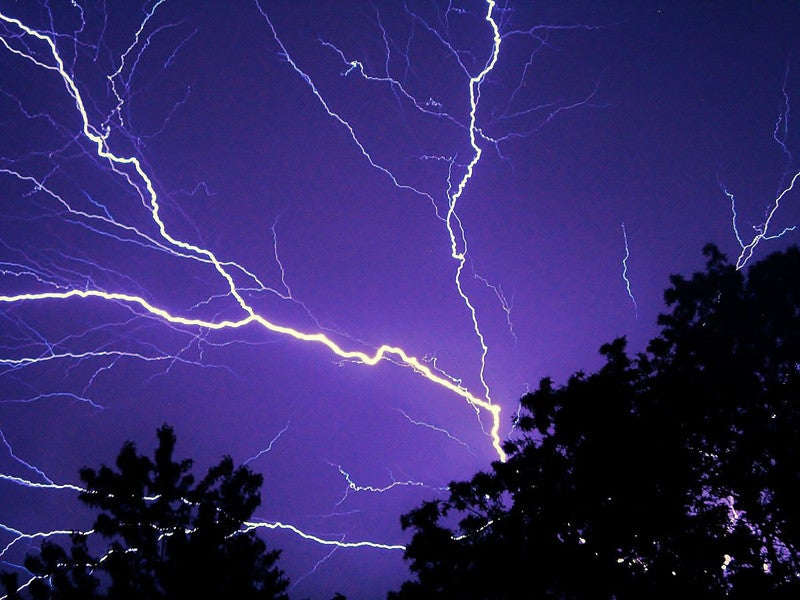Ask a Thru-Hiker: How Can I Avoid Being Struck by Lightning?

'Lightning. (Photo by Timothy Kirkpatrick'
This is Ask a Thru-Hiker, where record-setting long-distance hiker Liz “Snorkel” Thomas answers your questions about life on the trail.
Dear Snorkel,
I do most of my backpacking in the Rockies, so I know not to mess with lightning. While it’s easy enough to plan around the weather on a short backpacking trip, how in the heck do thru-hikers manage to make all the miles they need to make when they know lightning happens every day during the summer?
Lightning Rod
Dear Rod,
You are very right that thru-hikers have big concerns when it comes to lightning—especially on long trails like the Colorado Trail and Continental Divide Trail. While you’re more likely to get in a car accident on the way to the trailhead than be hit by lightning, those of us who spend extended periods in the mountains do have an increased risk. According to the National Ocean and Atmospheric Administration, in any given year, an average person’s chances of being struck by lightning are 1: 1,000,000; over the course of a lifetime, that increases to 1: 13,000.
But—as you astutely point out—every thru-hiker will tell you there is a little voice in their head constantly nagging them to move forward. Thru-hikers are always concerned with making continuous progress on towards their goal, be it the Canadian border or the next resupply town. Yet traveling in lightning country often requires thru-hikers to be flexible with their schedule and hiking style because the risk is very real: about 10% of those struck will die, often from cardiac arrest, and the other 90% may become permanently disabled.
One way long-distance hikers can make continuous progress ahead is by being creative with their route. Although many thru-hikes have an official route, in mountainous areas it’s a smart decision to map out bailout trails or lower alternates that you can take should a lightning storm come in.
Furthermore, almost every hiker takes lunch breaks. Thru-hikers can time their breaks strategically, such that they can wait out thunder and lightning storms before heading above treeline.
Much like on a backpacking trip, I suggest that thru-hikers plan their hiking schedule around the weather. In each town you resupply in, check the weather forecast—a spot forecast through NOAA weather can be more reliable for the mountains than checking the weather of cities in valleys. If it looks especially bad, consider taking a zero in town to wait the storm out. Otherwise, plan your daily schedule around the weather, and be prepared to stop and camp early below treeline if it changes for the worse
The best rule of thumb is for all hikers to stay below treeline in the afternoons and when there are storms. But since thru-hikers need to make miles, some will continue high onto ridges—knowing full well that if the weather turns worse, they will need to initiate a backup plan pronto. When thru-hikers see dark clouds coming towards them, feel their hair standing on end, or observe less than 30 seconds between lightning and thunder, they know to get the heck off the mountain. When you’re in the hills, trust your senses and instinct over what any technology says. Even if blue skies are above you, you can still be struck.
When a thru-hiker senses these warning signs, they readjust their daily plan. Safety comes first. Thru-hikers will run to lower elevations relative to the terrain—even if the trail continues going upwards.
If all else fails, wait out the storm in lightning position, then make your way back to the trail. If you’re lucky enough to make it back below treeline, consider setting up camp and calling it a day rather than continuing into dangerous conditions.
Whether you are thru-hiking, section-hiking, or day-hiking, review advice for avoiding lightning and what to do in the worst-case scenarios before you head into the high country. When it comes to thru-hiking, you don’t necessarily have to be the fastest walker out there to make your goals. But, you do need to be smart enough to avoid getting zapped.
Snorkel